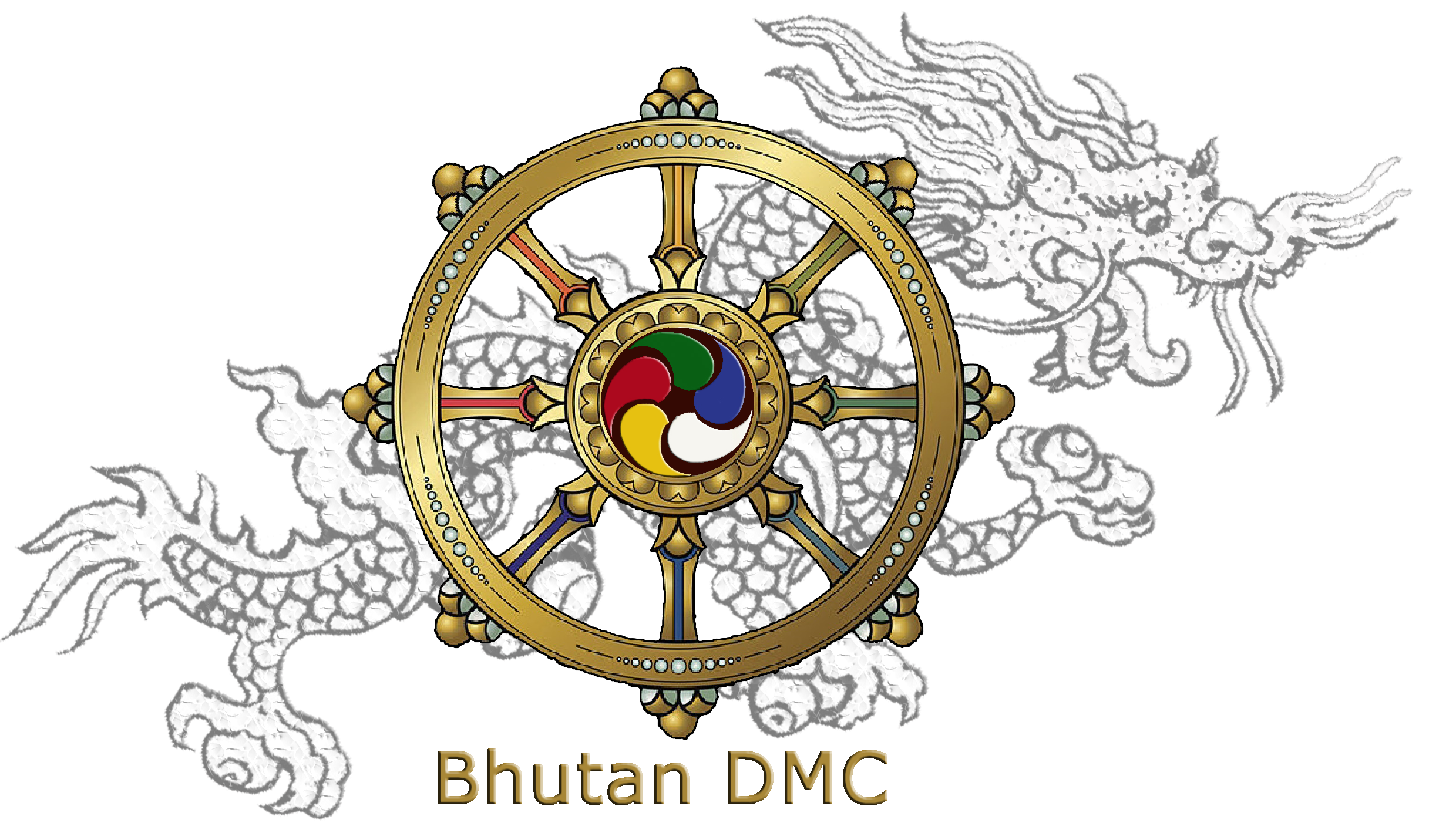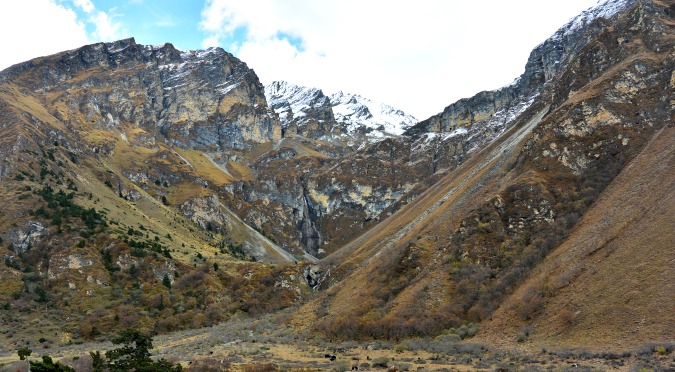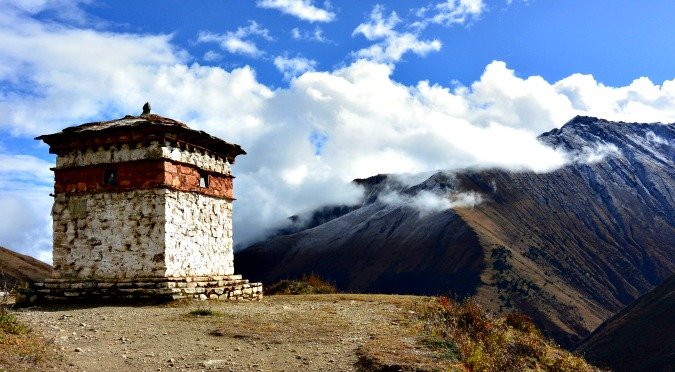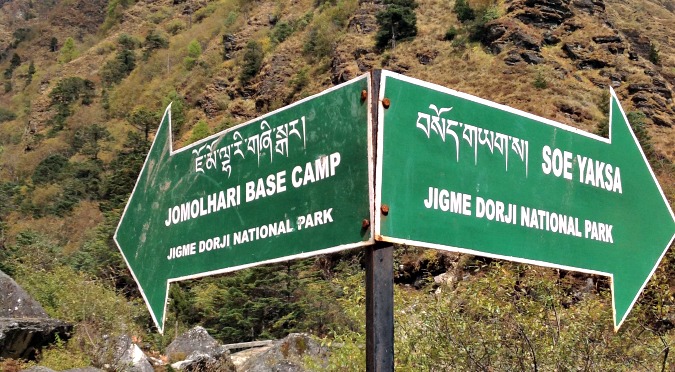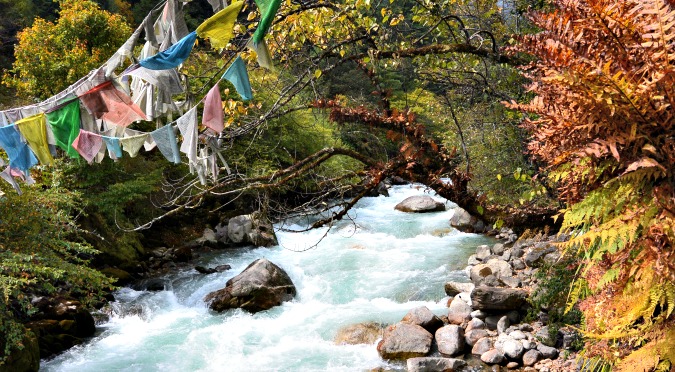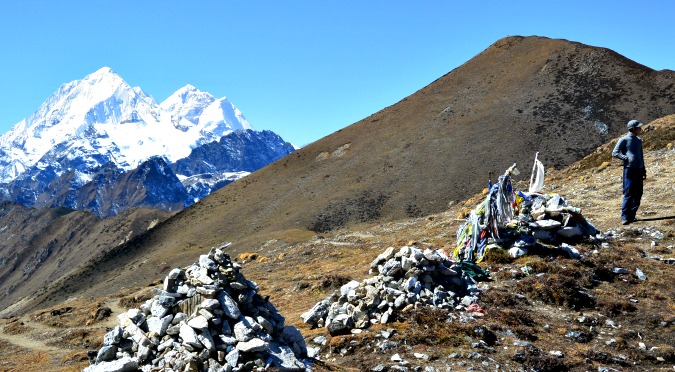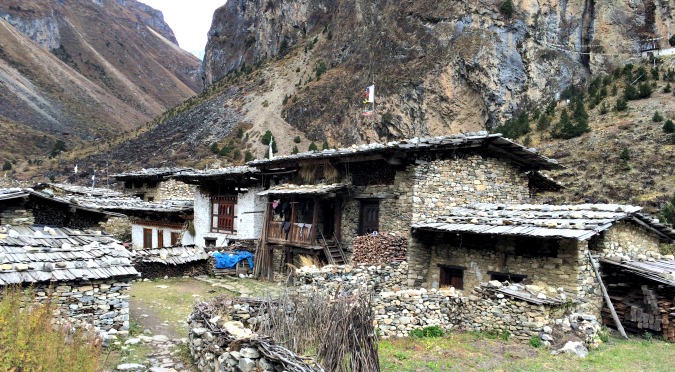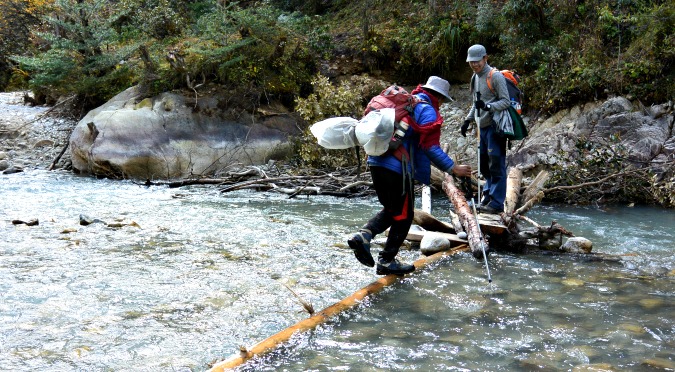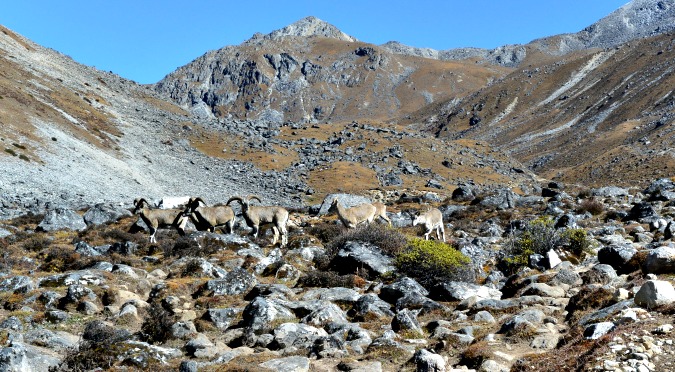A sublime trek which is an augmentation of Jomolhari Trek / Snowleopard Trek traversing through gorgeous alpine meadows, high mountain passes and dense sub-tropical forests. Going through amazingly beautiful landscape, the first five days of trek follows the route of Jomolhari Trek and offers magnificent views of Mt. Jomolhari, Jichu Drake and Tsherimgang while from sixth day path deviates to Lingshi for campsite at Chebisa, a charming little village. Along the trail, you’ll be able to spot wide species of flora and fauna including Bhutan’s national animal Takin. Travelers feel fortunate to visit remote mountain villages inhabited by Layaps, the people of Laya who are known for their unique culture, traditions and appearance and later part of trek, enjoy a day of relaxation at famous Gasa hot spirings.
Season: The best months for this trek are; April, May, June and from mid-September to mid-November.
Day 1
Arrive Paro
The flight to Bhutan is one of the most spectacular in entire Himalayas. Whether flying along the Himalayan range from Kathmandu or over the foothills from Kolkatta, each flight is a mesmerizing aeronautical feat and offers an exciting descent into the Kingdom.
On arrival at Paro airport, after immigration and custom formalities, received by our representative and transfer to the hotel.
Afternoon visit to Ta Dzong, built in 17th century, as watch tower to defend Paro Dzong and valley. This fortress was later converted into the National Museum in 1968 and is filled with antique thangkha paintings, textiles, weapons and Bhutan’s renowned postage stamps. Below the Ta Dzong, is Rinpung Dzong (“fortress of the heap of jewels”), which has a long and interesting history.
Overnight at the hotel in Paro. (Alt. 2,280m)
Day 2
Paro
Morning visit Kyichu Lhakhang, one of the oldest and most sacred shrines of the country.
Then embark on a fascinating excursion to Taktsang Monastery (Tiger’s Nest). Legends says that Guru Padmasambhava flew here on the back of tigress and landed at the spot where monastery was later built. The excursion to Tiger’s Nest takes about 5 hours.
Evening visit to Dungtse Lhakhang, built in 1433 by iron bridge builder Thangtong Gyalpo.
Later enjoy a stroll around Paro city centre.
Overnight at the hotel in Paro. (Altitude 2,280m)
Day 3
Shana – Thongdozam (Trek Start)
Distance – 12km, 4 – 5 hours, 360m Ascent and 80m Descent, Camp altitude 3610m
Early morning drive from your hotel to Shana village, about 2 hours to the road end. First day is a moderate trek to start with. The trek leads into Jigme Dorji National Park through the valley of the Paro river, which gradually narrows as the trail leads higher, winding up and down through the thick forest of oak, pine and juniper. Camp at Thongdozam amidst the woods.Overnight in camp.
Day 4
Thongdozam – Jangothang
Distance – 15km, 5-6 hours, 480m ascent, Camp altitude 4,080m
Continue following the Paro River and the valley begins to widen, opening to a spectacular area surrounded by high ridges and snow-capped peaks. Pass few yak herding houses that are clustered together. It will take bit longer day and as the altitude increase pace gets much slower.
Overnight in camp.
Day 5
Jangothang exploration
Jangothang is one of the most spectacular camping places in the entire Himalayas with the perfect view of the Mt. Jumolhari and Jichu Drake right in the front. There is yak herders’ villages and trout filled lakes to visit. The sacred mountain remains unclimbed and off limit to mountaineers even from the Tibetan side. Depending upon your interest, you can walk towards the glaciers of Jumolhari, or up to the viewpoint where you can get better view of the majestic mountains or visit the village and interact with the local community.
Overnight in camp.
Day 6
Jangothang – Lingshi
Distance – 18 km, 6-7 hours, 840 ascent, 870m descent, Camp altitude 4,010m
One of the longest days of the trek, the day begins with crossing the small bridge with the spectacular views of the Jhomolhari, Jichu Drake and the Tserim Gang seemingly nearby. After about 4 hours reach the Nyelela pass (4,870 m). Then we drop down gradually towards campsite Lingshi, along the side of the hill passing by some of yak herder’s tents, made from yak wool. As you come down into the Lingshi basin, a beautiful U-shaped valley, you get a wonderful view of Lingshi Dzong on clear days.
Overnight in Camp.
Day 7
Lingshi – Chebisa
Distance – 10 km, 5-6 hours, 280 ascent, 410m descent, Camp altitude 3,880m
Relatively not so strenuous trek today as there is no high passes to be crossed. Trail pass via beautiful villages set in a very spectacular landscape-the Ghoyul Village at 3880m, set right below a 300m cliff by the stream. Our camp will be on a meadow opposite to a beautiful Chebisa village at 3880m, with the huge waterfall at the end. If you reach there early, explore another sister village known as Chobiso, which is located upstream.
Overnight in Camp.
Day 8
Chebisa – Shomuthang
Distance – 17km, 6-7 hours, 890 ascent, 540m descent, Camp altitude 4260m
The route climbs the ridge leaving behind the Chebisa village through high pastures towards the Gogula pass (4,320 m). From the pass we descend into the side valley through the deep forest of dwarf rhododendron. The trail again climbs up through the cedar forest passing through yak herders huts and gradually head down to the camp near a riverbed at Shomuthang 4260m.
Overnight in Camp.
Day 9
Shomuthang – Robluthang
Distance – 18km, 6-7 hours, 700 ascent, 760m descent, Camp altitude 4,160m
A long and steady trek over the Jarela pass at 4,700 m offering a great view of the Himalayan mountains above us. The one visible to the south-east is Khang Bum (6526m) and one to the north is Gangchenta 6840m (Tiger Mountain) on the route to Laya. We descent steeply down a forest trail to the Tsari Jathang valley, declared as a Takin Sanctuary, the grazing place for the wild Takins during the summer. Trail climbs steeply and into a side valley to your campsite at Robluthang at 4160m.
Overnight in Camp.
Day 10
Robluthang – Limithang
Distance – 19km, 7-8 hours, 850 ascent, 870m descent, Camp altitude 4100m
Considered as one of the long and hardest day trek on this route, crossing the last and the highest pass of Shinchen La Pass,5000m. But the climb is rewarded by the spectacular views of the mountains from all sides, especially to the north. Camp at Limithang 4100m in a big meadow by the river with the Tiger Mountain towering over the camp.
Overnight in Camp
Day 11
Limithang – Laya
Distance – 10km, 4-5 hours, 60 ascent, 340m descent, Camp altitude 3800m
Today is not a long walking day and more over no high passes to be crossed. The trail leads through the deep cedar forest crossing many smaller, muddy side streams and after a while the vegetation changes to fir trees. Passing through the heavily wooded forests and totally uninhabited, we reach the village of Laya located at an altitude of 3800m, one of the highest settlements.Overnight in camp.
Day 12
Laya – Exploration of nomadic village
Laya is an isolated village situated at an altitude of 3800m and inhabitants’ lively hood here depends on Yak. Today, you can explore villages and experience the lifestyle of Layaps which is quite exquisite.
Day 13
Laya – Koina
Distance – 19km, 6-7 hours, 260m ascent, 1070m descent, Camp altitude 3050m
The trail winds up and down along the river valley of Mo Chhu avoiding natural obstacles and affording breath-taking views of the raging river, feeder streams and waterfalls. Lots of ups and downs will lead you to Kohi Lapcha at 3.300 m. The trek then drops down to the large stream of Koina Chhu, where you will find the campsite of Koina.
Overnight in Camp.
Day 14
Koina – Gasa
Distance – 14km, 6-7 hours, 900m ascent, 1710m descent, Camp altitude 2240m
From the camp, we will gradually climb through the bamboo forest to the last pass on the trek, to Barila pass at 3,740 m after which the trail descends all the way until you reach Gasa village (2,770m). Your car will pick you and transfer to Gasa dzong till the campsite next to hot spring, 2240m. Enjoy hot spring bath in the evening.
Overnight in camp.
Day 15
Gasa – Punakha
After breakfast, drive to Punakha valley. Drive through Damji village and follow the Mo Chhu river descending down to Punakha, taking about 4 hours on road.
Afternoon, visit Punakha Dzong or (Palace of Great Happiness), built at the junction of the Phochu and Mochu rivers in 1637 by Shabdrung Ngawang Namgyal. This majestic dzong served as both the religious and the administrative center of Bhutan in the past.
Overnight at the hotel in Punakha. (Altitude 1,300m)
Day 16
Punakha – Thimphu (75km, approx. 3-hour drive)
Morning after breakfast, excursion to Chimi Lhakhang, situated on a hillock in the centre of the valley, also known as the temple of fertility. It is widely believed that couples who do not have children and wanting one, if they pray at this temple, they are usually blessed with a child very soon.
Then drive to capital city Thimphu across Dochula pass (3,080m). At Dochula Pass, 108 chortens or stupas known as Druk Wangyal Chortens have been built by Ashi Dorji Wangmo Wangchuk, the eldest Queen Mother. These chortens are built in three layers, the first lowest level layer has forty-five chortens, the second has thirty-six and the top layer has twenty-seven, built around the main chorten.
Afternoon visit Buddha Dordenma. This massive statue of Shakyamuni made of bronze and is gilded in gold, measures 51.5 meters in height, making it one of the largest statues, in Bhutan. 125,000 smaller Buddha statues have been placed within the Buddha Dordenma statue.
Conclude the day with visit of Trashichhoedzong, known as ‘fortress of the glorious religion’. It was initially built in 1641 and later restored in its present form by King Jigme Dorji Wangchuk in 1965. The Dzong houses, main secretariat building which houses the throne room of His Majesty, the King of Bhutan.
Evening at leisure in local crafts bazar.
Overnight at the hotel in Thimphu. (Altitude 2,320m)
Day 17
Thimphu – Paro (55km, approx. 1.1/2-hour drive)
Morning visit Memorial Chorten, the stupa built in memory of Bhutan’s Third King, His Majesty Jigme Dorji Wangchuk who is regarded as Father of modern Bhutan.
Bhutanese textiles are an integral part of its cultural and heritage and are unique for their diversity and sophistication. To experience the impressive art technique, Textile Museum is next in visit.
The other sights of interest are; Institute for Zorig Chusum which imparts training to young students in 13 traditional crafts of Bhutan, Folk Heritage Museum; dedicated to connecting people with the rich Bhutanese Folk heritage and rural history through exhibits, demonstrations, educational programs and documentation of Bhutanese rural life, Motithang zoo; to see Bhutan’s national animal Takin.
Later in the afternoon drive to Paro en route visiting Simtokha Dzong, the oldest fortress of the country which now houses School for Buddhist studies.
Evening for shopping or at leisure in Paro city centre.
Overnight at the hotel in Paro. (Altitude 2,280m)
Day 18
Depart Paro
Morning transfer to the airport for flight to onward destination. Our representative will assist you with exit formalities and bid you farewell.
